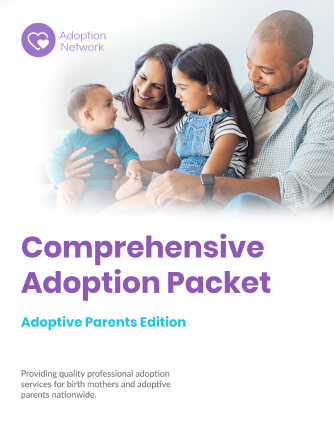
Talking to Children About Adoption: 4-5 Years Old
Your child is developing new skills every day. They are more talkative, can recall stories and have increased language skills allowing the telling of stories with more details. They also know the difference between fact and fantasy.
Continue to share your child’s adoption story with them, adding a few more details each time. Then, ask your child to tell you the story. It is good practice for them and you will gain insight into what they will tell others. This does not necessarily mean they understand, rather that they can repeat what they have been told. To figure out what they know, you can ask specific questions. If they can answer them, they are beginning to understand their adoption and how you became a family. You can also ask them to help tell the story and let them fill in the blanks, such as where they were born, what their birth mother’s name was or how they came home.
They are beginning to understand the concept of time and sequence, such as numbers, ages, and days of the week. They are beginning to understand family relationships, such as child and parent, spouses and siblings. When telling the adoption story, include how you met your spouse or best friends, and how you consider each other family. Then explain how families are formed by marriage, adoption and other agreed upon commitments. Hearing families are groups of people who found each other can lessen the feeling of being different.
Children of this age are becoming more independent. They like to please adults and peers. They recognize difference and seek to find similarities with their friends. They like to play simple games, can be competitive, knowing the rules, but sometimes changing them to suit their needs. They like helping with simple tasks as setting the table, emptying the dishwasher, folding small towels, etc.
Most children of this age are in preschool or kindergarten. You may have concerns about sharing adoption with teachers and school administrators during interviews or when your child starts a new program or attends a new school. Keep in mind, your child will be interacting with peers and talking about family during circle time, reading time and free play. They are making up games and family stories. They will do a “who am I?” or “family tree assignment.” Any of these activities may pose questions and opportunities to talk about adoption.
When teachers are aware of the adoption, they can keep an eye out for these conversations, things other children are saying or asking, and alert you if your child seems upset. Working together, you and the teacher can help your child and the other children understand diverse family formations. You can suggest a children’s adoption book for classroom reading time. Remember, your child has knowledge of adoption. For most of the other children, this will be a new concept. You can be there for the reading, and your child can help answer questions.
Be prepared for comments and questions from other parents. Some may say they never would have guessed your child was adopted. Some will have questions, you may choose to answer, or not. You should not reveal any of your child’s personal background. This is private information that should remain with your immediate family.
Begin to teach your child that they have options when it comes to comments or questions about their adoption. They can answer a specific question about their adoption, educate others about adoption in general or choose not to answer at all. You can rehearse their responses or play pretend games where adoption and interactions with others is the theme. Then let them direct the pretend play with the scenarios from school, playground and peer interaction. Your child will quickly become an expert and you will become less concerned about their handling adoption as it comes up in their daily lives.
Available 24/7 to Answer Your Adoption Questions


Search Adoption Network
Speak with a Specialist 1-800-367-2367
